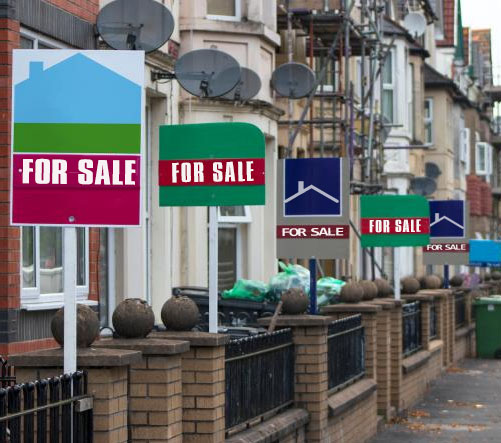
The UK housing market may appear surprisingly resilient on the surface, but beneath the headlines of rising buyer interest and stronger-than-usual summer sales, the underlying story for sellers is less reassuring. Despite an 11% rise in buyer demand and an 8% increase in sales agreements compared to this time last year, house price growth has slowed significantly – and a surge in property supply may be to blame.
According to the latest Zoopla House Price Index, the average UK home is now worth £268,400 – just £3,350 more than a year ago. The annual rate of price growth has slowed to just 1.3%, and Zoopla warns that the market is becoming increasingly shaped by supply-side pressure, not demand.
The Emerging Buyer’s Market
The number of homes for sale has jumped by 12%, averaging 37 listings per estate agency branch. This increase has created a buyer’s market, giving purchasers more options and bargaining power. As Richard Donnell, Executive Director at Zoopla, puts it:
“We’re seeing healthy levels of demand and sales, but this isn’t sparking faster price inflation. In fact, more homes for sale, particularly across southern England, is reinforcing a buyer’s market, keeping price rises in check.”
For sellers, the takeaway is clear: more supply means more competition, and that competition is putting a cap on prices.
Could More Landlords Flood the Market?
While existing supply is already softening the market, there’s growing concern that a second wave of property listings could be on the horizon — this time from private landlords. Many are anxiously awaiting confirmation of when the long-debated Renters Reform Bill will become law.
If the bill passes — and crucially, once an implementation date is announced — many landlords may decide to exit the private rented sector (PRS) before new obligations come into force. This could trigger a further flood of properties onto the market, tipping the balance even more decisively in buyers’ favour.
Sellers should ask themselves:
If this happens, will your property stand out — or be swept up in a wider price dip caused by oversupply? Should you sell sooner than later to get the price possible?
Additional Factors Dampening Prices
On top of this increased supply, other market forces are keeping a lid on price growth:
- Stamp Duty costs have increased significantly since April, with 83% of buyers now paying, up from 49%. In high-priced areas like London, first-time buyers are facing an average bill of £6,100 — up from zero.
- Mortgage rates are holding steady, but affordability constraints remain, especially in southern regions.
- Regional disparities show the South East, South West, and London growing by just 0.2%–0.3%, while cities like Exeter and Torquay are already seeing prices fall.
Why Sellers Shouldn’t Wait
If you’re considering selling, the message is simple: time may not be on your side. Prices have stalled, supply is growing, and market conditions may worsen if the Renters Reform Bill sparks a sell-off.
Sellers waiting for a “better time” may find that rising supply and higher buyer costs eat further into their asking price — especially in areas already seeing downward pressure.
If you’re a landlord, this is an especially important moment to act. Exit before the crowd, while demand is still healthy and before any policy change causes a mass rush to sell.
In a market where supply is outpacing demand, hesitation could cost you.
